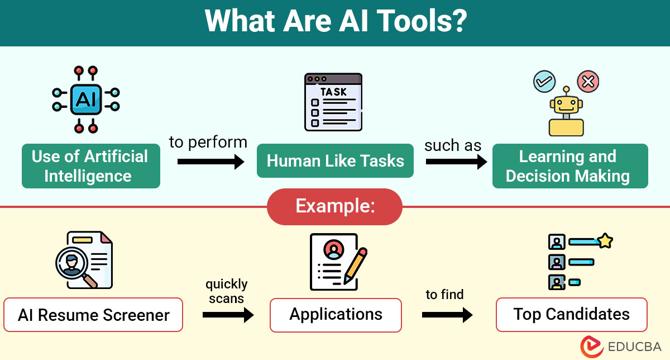Educba
1d
314

Image Credit: Educba
AI Tools
- AI tools utilize artificial intelligence to perform tasks that typically require human thinking, such as problem-solving and decision-making, enhancing efficiency and accuracy.
- Types of AI tools include NLP tools for language processing, ML platforms for training models, computer vision tools for visual data analysis, RPA for automating business processes, and AI content generation tools.
- Benefits of AI tools include increased efficiency, enhanced decision-making, cost reduction, personalized experiences, and boosting innovation and creativity in various industries.
- Popular AI tools like ChatGPT, Google Cloud AI, UiPath, TensorFlow, and Canva's AI showcase the diverse applications of AI technology across different sectors.
- AI tools are transforming industries such as healthcare, finance, retail, manufacturing, and education by automating processes, improving customer experiences, and enabling new capabilities.
- Challenges associated with AI tools include data privacy, bias, job displacement, and complexity, requiring ethical considerations and monitoring.
- Future advancements in AI tools include explainable AI, IoT integration, multimodal AI combining different data types, AI for creativity, and democratization of AI for broader accessibility.
- AI tools have become essential in driving productivity, innovation, and decision-making across industries, offering new opportunities for individuals and organizations to shape a more efficient future.
- AI tools differ from regular software by learning from data and adapting over time, making them more flexible compared to traditional fixed-rule software.
- The impact of AI tools on job roles varies, with automation replacing routine tasks but also creating new roles focused on AI development, oversight, and maintenance.
- AI tools are instrumental in unlocking new possibilities and enhancing daily life, from automating tasks to fostering creativity, ultimately shaping a more innovative and productive future.
Read Full Article
18 Likes
For uninterrupted reading, download the app